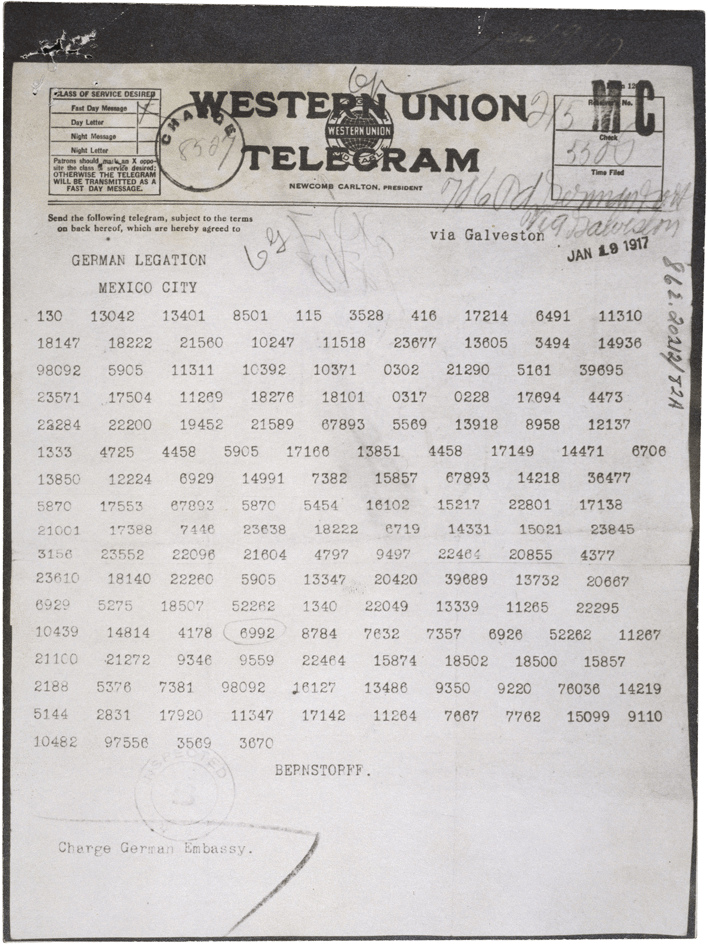|
Cryptography
Cryptography, or cryptology (from "hidden, secret"; and ''graphein'', "to write", or ''-logy, -logia'', "study", respectively), is the practice and study of techniques for secure communication in the presence of Adversary (cryptography), adversarial behavior. More generally, cryptography is about constructing and analyzing Communication protocol, protocols that prevent third parties or the public from reading private messages. Modern cryptography exists at the intersection of the disciplines of mathematics, computer science, information security, electrical engineering, digital signal processing, physics, and others. Core concepts related to information security (confidentiality, data confidentiality, data integrity, authentication, and non-repudiation) are also central to cryptography. Practical applications of cryptography include electronic commerce, Smart card#EMV, chip-based payment cards, digital currencies, password, computer passwords, and military communications. ... [...More Info...] [...Related Items...] OR: [Wikipedia] [Google] [Baidu] |
Information Security
Information security is the practice of protecting information by mitigating information risks. It is part of information risk management. It typically involves preventing or reducing the probability of unauthorized or inappropriate access to data or the unlawful use, Data breach, disclosure, disruption, deletion, corruption, modification, inspection, recording, or devaluation of information. It also involves actions intended to reduce the adverse impacts of such incidents. Protected information may take any form, e.g., electronic or physical, tangible (e.g., Document, paperwork), or intangible (e.g., knowledge). Information security's primary focus is the balanced protection of data confidentiality, data integrity, integrity, and data availability, availability (also known as the 'CIA' triad) while maintaining a focus on efficient policy implementation, all without hampering organization productivity. This is largely achieved through a structured risk management process. To stand ... [...More Info...] [...Related Items...] OR: [Wikipedia] [Google] [Baidu] |
Encryption
In Cryptography law, cryptography, encryption (more specifically, Code, encoding) is the process of transforming information in a way that, ideally, only authorized parties can decode. This process converts the original representation of the information, known as plaintext, into an alternative form known as ciphertext. Despite its goal, encryption does not itself prevent interference but denies the intelligible content to a would-be interceptor. For technical reasons, an encryption scheme usually uses a pseudo-random encryption Key (cryptography), key generated by an algorithm. It is possible to decrypt the message without possessing the key but, for a well-designed encryption scheme, considerable computational resources and skills are required. An authorized recipient can easily decrypt the message with the key provided by the originator to recipients but not to unauthorized users. Historically, various forms of encryption have been used to aid in cryptography. Early encryption ... [...More Info...] [...Related Items...] OR: [Wikipedia] [Google] [Baidu] |
Decryption
In cryptography, encryption (more specifically, encoding) is the process of transforming information in a way that, ideally, only authorized parties can decode. This process converts the original representation of the information, known as plaintext, into an alternative form known as ciphertext. Despite its goal, encryption does not itself prevent interference but denies the intelligible content to a would-be interceptor. For technical reasons, an encryption scheme usually uses a pseudo-random encryption key generated by an algorithm. It is possible to decrypt the message without possessing the key but, for a well-designed encryption scheme, considerable computational resources and skills are required. An authorized recipient can easily decrypt the message with the key provided by the originator to recipients but not to unauthorized users. Historically, various forms of encryption have been used to aid in cryptography. Early encryption techniques were often used in military m ... [...More Info...] [...Related Items...] OR: [Wikipedia] [Google] [Baidu] |
Computational Hardness Assumption
In computational complexity theory, a computational hardness assumption is the hypothesis that a particular problem cannot be solved efficiently (where ''efficiently'' typically means "in polynomial time"). It is not known how to prove (unconditional) hardness for essentially any useful problem. Instead, computer scientists rely on reductions to formally relate the hardness of a new or complicated problem to a computational hardness assumption about a problem that is better-understood. Computational hardness assumptions are of particular importance in cryptography. A major goal in cryptography is to create cryptographic primitives with provable security. In some cases, cryptographic protocols are found to have information theoretic security; the one-time pad is a common example. However, information theoretic security cannot always be achieved; in such cases, cryptographers fall back to computational security. Roughly speaking, this means that these systems are secure ''assumin ... [...More Info...] [...Related Items...] OR: [Wikipedia] [Google] [Baidu] |
Alice And Bob
Alice and Bob are fictional characters commonly used as placeholders in discussions about cryptography, cryptographic systems and Cryptographic protocol, protocols, and in other science and engineering literature where there are several participants in a thought experiment. The Alice and Bob characters were created by Ron Rivest, Adi Shamir, and Leonard Adleman in their 1978 paper "A Method for Obtaining Digital Signatures and Public-key Cryptosystems". Subsequently, they have become common archetypes in many scientific and engineering fields, such as quantum cryptography, game theory and physics. As the use of Alice and Bob became more widespread, additional characters were added, sometimes each with a particular meaning. These characters do not have to refer to people; they refer to generic agents which might be different computers or even different programs running on a single computer. Overview Alice and Bob are the names of fictional characters used for convenience and ... [...More Info...] [...Related Items...] OR: [Wikipedia] [Google] [Baidu] |
Ciphertext
In cryptography, ciphertext or cyphertext is the result of encryption performed on plaintext using an algorithm, called a cipher. Ciphertext is also known as encrypted or encoded information because it contains a form of the original plaintext that is unreadable by a human or computer without the proper cipher to decrypt it. This process prevents the loss of sensitive information via hacking. Decryption, the inverse of encryption, is the process of turning ciphertext into readable plaintext. Ciphertext is not to be confused with codetext because the latter is a result of a code, not a cipher. Conceptual underpinnings Let m\! be the plaintext message that Alice wants to secretly transmit to Bob and let E_k\! be the encryption cipher, where _k\! is a secret key, cryptographic key. Alice must first transform the plaintext into ciphertext, c\!, in order to securely send the message to Bob, as follows: : c = E_k(m). \! In a symmetric-key system, Bob knows Alice's encryption key. ... [...More Info...] [...Related Items...] OR: [Wikipedia] [Google] [Baidu] |
Password
A password, sometimes called a passcode, is secret data, typically a string of characters, usually used to confirm a user's identity. Traditionally, passwords were expected to be memorized, but the large number of password-protected services that a typical individual accesses can make memorization of unique passwords for each service impractical. Using the terminology of the NIST Digital Identity Guidelines, the secret is held by a party called the ''claimant'' while the party verifying the identity of the claimant is called the ''verifier''. When the claimant successfully demonstrates knowledge of the password to the verifier through an established authentication protocol, the verifier is able to infer the claimant's identity. In general, a password is an arbitrary String (computer science), string of character (computing), characters including letters, digits, or other symbols. If the permissible characters are constrained to be numeric, the corresponding secret is sometimes ... [...More Info...] [...Related Items...] OR: [Wikipedia] [Google] [Baidu] |
Rotor Machine
In cryptography, a rotor machine is an electro-mechanical stream cipher device used for encrypting and decrypting messages. Rotor machines were the cryptographic state-of-the-art for much of the 20th century; they were in widespread use from the 1920s to the 1970s. The most famous example is the German Enigma machine, the output of which was deciphered by the Allies during World War II, producing intelligence code-named '' Ultra''. Description The primary component of a rotor machine is a set of ''rotors'', also termed ''wheels'' or ''drums'', which are rotating disks with an array of electrical contacts on either side. The wiring between the contacts implements a fixed substitution of letters, replacing them in some complex fashion. On its own, this would offer little security; however, before or after encrypting each letter, the rotors advance positions, changing the substitution. By this means, a rotor machine produces a complex polyalphabetic substitution cipher, whic ... [...More Info...] [...Related Items...] OR: [Wikipedia] [Google] [Baidu] |
Computer Science
Computer science is the study of computation, information, and automation. Computer science spans Theoretical computer science, theoretical disciplines (such as algorithms, theory of computation, and information theory) to Applied science, applied disciplines (including the design and implementation of Computer architecture, hardware and Software engineering, software). Algorithms and data structures are central to computer science. The theory of computation concerns abstract models of computation and general classes of computational problem, problems that can be solved using them. The fields of cryptography and computer security involve studying the means for secure communication and preventing security vulnerabilities. Computer graphics (computer science), Computer graphics and computational geometry address the generation of images. Programming language theory considers different ways to describe computational processes, and database theory concerns the management of re ... [...More Info...] [...Related Items...] OR: [Wikipedia] [Google] [Baidu] |
Military Communications
Military communications or military signals involve all aspects of communications, or conveyance of information, by armed forces. Examples from '' Jane's Military Communications'' include text, audio, facsimile, tactical ground-based communications, naval signalling, terrestrial microwave, tropospheric scatter, satellite communications systems and equipment, surveillance and signal analysis, security, direction finding and jamming. IHS Jane'sbr>Military Communications Retrieved 2012-01-23. The most urgent purposes are to communicate information to commanders and orders from them. Military communications span from pre-history to the present. The earliest military communications were delivered by runners. Later, communications progressed to visual signals. For example, Naval ships would use flag signaling to communicate from ship to ship. These flags are a uniform set of easily identifiable nautical codes that would convey visual messages and codes between ships and fro ... [...More Info...] [...Related Items...] OR: [Wikipedia] [Google] [Baidu] |
Authentication
Authentication (from ''authentikos'', "real, genuine", from αὐθέντης ''authentes'', "author") is the act of proving an Logical assertion, assertion, such as the Digital identity, identity of a computer system user. In contrast with identification, the act of indicating a person or thing's identity, authentication is the process of verifying that identity. Authentication is relevant to multiple fields. In art, antiques, and anthropology, a common problem is verifying that a given artifact was produced by a certain person, or in a certain place (i.e. to assert that it is not counterfeit), or in a given period of history (e.g. by determining the age via carbon dating). In computer science, verifying a user's identity is often required to allow access to confidential data or systems. It might involve validating personal identity documents. In art, antiques and anthropology Authentication can be considered to be of three types: The ''first'' type of authentication is accep ... [...More Info...] [...Related Items...] OR: [Wikipedia] [Google] [Baidu] |
Nonsense
Nonsense is a form of communication, via speech, writing, or any other formal logic system, that lacks any coherent meaning. In ordinary usage, nonsense is sometimes synonymous with absurdity or the ridiculous. Many poets, novelists and songwriters have used nonsense in their works, often creating entire works using it for reasons ranging from pure comic amusement or satire, to illustrating a point about language or reasoning. In the philosophy of language and philosophy of science, nonsense is distinguished from sense or meaningfulness, and attempts have been made to come up with a coherent and consistent method of distinguishing sense from nonsense. It is also an important field of study in cryptography regarding separating a signal from noise. Literary The phrase " Colorless green ideas sleep furiously" was coined by Noam Chomsky as an example of nonsense. However, this can easily be confused with poetic symbolism. The individual ''words'' make sense and are arranged ac ... [...More Info...] [...Related Items...] OR: [Wikipedia] [Google] [Baidu] |






